issue contents
March 2016 issue

Cover illustration: The molecules of 7-iodo-1H-2,3-dione dimerize in the solid state through N-H O hydrogen bonds. Intermolecular I
O hydrogen bonds. Intermolecular I O close contacts link the molecules into infinite chains along [20-1]. See: Golen & Manke [IUCrData (2016). 1, x160412].
O close contacts link the molecules into infinite chains along [20-1]. See: Golen & Manke [IUCrData (2016). 1, x160412].
metal-organic compounds
Download citation


Download citation


Open  access
access
 access
accessIn the crystal structure of the title dicopper(II) complex, the CuII centre adopts a Jahn–Teller-distorted octahedral coordination geometry. The bonds to the equatorial ligands are significantly shorter than those to the axial ligands.
CCDC reference: 1439047
Download citation


Download citation


Open  access
access
 access
accessThe complex binuclear silver cation in the title salt is centrosymmetric, with the bridging Cl atom located on the inversion centre.
CCDC reference: 1455947
Download citation


Download citation


Open  access
access
 access
accessThree 2,6-bis(trimethylsilylamino)pyridine ligands coordinate a lithium cation in a tetrahedral coordination environment.
CCDC reference: 1456332
Download citation


Download citation


Open  access
access
 access
accessThe asymmetric unit of the title salt comprises one cation and two independent (1/6) fragments of the [Bi3I12]3− ions. The C—N bond lengths in the guanidinium ion indicate partial double-bond character, pointing towards charge delocalization within the NCN planes.
CCDC reference: 1459096
Download citation


Download citation


Open  access
access
 access
accessThe molecular structure of the first isocyanide complex with GaCl3 is presented.
CCDC reference: 1456425
Download citation


Download citation


Open  access
access
 access
accessIn the title compound, there are two types of ZnII complex ions. In one, the ZnII cation is coordinated by a Wells–Dawson polyanion [α-P2W18O62]6− (POM) via a terminal O atom. The two independent [Zn(C2H6OS)6]2+ cations exhibit similar distorted octahedral coordination geometries.
CCDC reference: 1463749
Download citation


Download citation


Open  access
access
 access
accessThe asymmetric unit of the title salt, (C13H24N3)3[Bi2I9], comprises two tris(pyrrolidin-1-yl)carbenium cations and one half of the [Bi2I9]3− ion. The C—N bond lengths of the CN3 units in both cations indicate partial double-bond character, pointing towards charge delocalization within the NCN planes.
CCDC reference: 1465174
Download citation


Download citation


Open  access
access
 access
accessThe IrIII atom in the cation of (4,4′-dimethoxy-2,2′-bipyridine)bis[2-(pyridin-2-yl)phenyl]iridium hexafluoridophosphate has a distorted octahedral geometry defined by a cis-C2N4 donor set.
CCDC reference: 1457967
Download citation


Download citation


Open  access
access
 access
accessThe crystal structure consists of Rb+ ions sequestered by a [2.2.2]cryptand molecule and 4,4′-bipyridinidyl monoanions. The building units are arranged in the sense of a distorted rock salt type of structure.
CCDC reference: 1470480
organic compounds
Download citation


Download citation


Open  access
access
 access
accessThe title compound is approximately planar. In the crystal, molecules are stacked in a column along the b axis through π–π interactions.
CCDC reference: 1454889
Download citation


Download citation


Open  access
access
 access
accessIn the title compound, the hydroxyphenyl ring is twisted by 35.42 (11)° from the plane of the pyrazoline ring. The keto O atom is involved in two intramolecular O—H⋯O hydrogen bonds, which generate S(6) ring motifs.
CCDC reference: 1455362
Download citation


Download citation


Open  access
access
 access
accessIn the title compound, there is asymmetry with respect to the O—C=O bond angles. In the crystal, molecules are linked by O—H⋯O hydrogen bonds, forming chains along [010]. In addition, weak C—H⋯O hydrogen bonds link these chains, forming a three-dimensional network.
CCDC reference: 1455917
Download citation


Download citation


Open  access
access
 access
accessIn the racemic title compound, the dihedral angle formed by the mean planes of the cyclopropane and benzene rings is 5.0 (2)°. In the crystal, a pair of weak C—H⋯O hydrogen bonds connect two molecules related by a twofold rotation axis, thus forming a dimer with an  (10) motif.
(10) motif.
CCDC reference: 1456342
Download citation


Download citation


Open  access
access
 access
accessIn the title compound, the hexyl chain has an extended conformation. In the crystal, molecules are linked via O—H⋯O and N—H⋯O hydrogen bonds, forming slabs parallel to (001).
CCDC reference: 1451378
Download citation


Download citation


Open  access
access
 access
accessIn the crystal of the title compound, N—H⋯N hydrogen bonds link the molecules into [010] chains.
CCDC reference: 1456540
Download citation


Download citation


Open  access
access
 access
accessThe crystal structure of C7H5BrO3 features carboxylic acid inversion dimers and short Br⋯Br contacts [3.4442 (5) Å].
CCDC reference: 1455826
Download citation


Download citation


Open  access
access
 access
accessThe molecular structure of tetramethylammonium trifluoromethanesulfonate (trifluoromethanesulfonate) is presented. The solid-state structure of very few tetraalkylammonium trifluoromethanesulfonate salts have been determined.
CCDC reference: 1456956
Download citation


Download citation


Open  access
access
 access
accessThe crystal structure of trans-4-methylcyclohexyl tosylate is reported. The structure demonstrates a flattening of the cyclohexyl ring from the ideal chair conformation.
CCDC reference: 1458988
Download citation


Download citation


Open  access
access
 access
accessIn the crystal structure of 5-bromo-1-octylindoline-2,3-dione, there are two independent molecules in the asymmetric unit having different orientations and linked by a hydrogen bond.
CCDC reference: 1457712
Download citation


Download citation


Open  access
access
 access
accessIn the title compound, the isatin (indole-2,3-dione) moiety is planar (r.m.s. deviation = 0.022 Å) and its mean plane makes a dihedral angle of 74.19 (12)° with the benzyl ring. In the crystal, molecules are linked by C—H⋯O hydrogen bonds, forming C(6) chains propagating along the b-axis direction.
CCDC reference: 1458273
Download citation


Download citation


Open  access
access
 access
accessIn the title compound, the dihedral angle between the benzene rings of the biphenyl unit is 1.54 (13)° and the C—O—C—C torsion angle is 174.4 (2)°. In the crystal, very weak C—H⋯π interactions link the molecules into a three-dimensional network.
CCDC reference: 1460794
Download citation


Download citation


Open  access
access
 access
accessIn the title isatin derivative, the dihedral angle between the mean plane of the indoline ring system and that of the propynyl chain is 73 (8)°. In the crystal, molecules are linked by C—H⋯O hydrogen bonds, forming zigzag chains propagating along [010].
CCDC reference: 1444744
Download citation


Download citation


Open  access
access
 access
accessThe molecules of 7-iodo-1H-2,3-dione dimerize in the solid state through N—H⋯O hydrogen bonds. Intermolecular I⋯O close contacts link the molecules into infinite chains along [20 ].
].
CCDC reference: 1463777
Download citation


Download citation


Open  access
access
 access
accessIn the title hydrazide compound, the methoxyphenyl ring and the methylbenzylidene ring are inclined to one another by 60.43 (5)°. In the crystal, molecules are linked via N—H⋯O hydrogen bonds, forming chains along [001].
CCDC reference: 1465282
Download citation


Download citation


Open  access
access
 access
accessThe title compound crystallizes with two molecules in the asymmetric unit with different conformations to the ethanol side chain; one is gauche and the other is anti. In the crystal, [100] chains of alternating molecules are linked by O—H⋯O hydrogen bonds.
CCDC reference: 1465147
Download citation


Download citation


Open  access
access
 access
accessIn ethyl 2-(4-chloro-3-methylphenoxy)acetate, the pendant ethyl chain has an extended conformation and lies in the plane of the substituted benzene ring. The crystal structure features inversion-related dimers linked by pairs of benzene–carbonyl C—H⋯O hydrogen bonds, generating  (16) loops.
(16) loops.
CCDC reference: 1463900
Download citation


Download citation


Open  access
access
 access
accessIn the title molecule, C13H7Cl2FO2, the planes of the two aromatic rings are inclined to one another by 49.96 (12)° and the keto group is twisted at an angle of 66.3 (3)° out of the 2-chloro-6-fluorophenyl plane. In the crystal, intermolecular C—H⋯O hydrogen bonds link the molecules into chains extending in the [010] direction and weak C—H⋯Cl interactions link these chains into sheets parallel to the (101) plane.
Download citation


Download citation


Open  access
access
 access
accessThe title dihydrocoumarin was synthesized via a microwave-assisted hydroarylation reaction. The molecule is L-shaped with the 4-methoxyphenyl ring being inclined to the mean plane of the coumarin moiety by 78.21 (9)°. In the crystal, molecules are linked via C—H⋯O hydrogen bonds, forming ribbons along [010].
CCDC reference: 1465266
Download citation


Download citation


Open  access
access
 access
accessThe title molecule has an `extended' conformation. The molecules form chains through N—H⋯N and C—H⋯O hydrogen bonds.
CCDC reference: 1468941
Download citation


Download citation


Open  access
access
 access
accessThe title compound, (MeS)2C=N—C N, has a planar environment around the imido C atom (sp2) and a linear one around the cyanide C atom (sp); the CN bonds are triple, double and single.
CCDC reference: 1468943
Download citation


Download citation


Open  access
access
 access
accessIn an effort to evaluate the antitubercular activity of vanillin-based pyrazoles, the title compound was synthesized. The molecule is twisted with the benzene rings being inclined to the mean plane of the pyrazole ring by 56.78 (9) and 9.7 (1)°.
CCDC reference: 1469216
Download citation


Download citation


Open  access
access
 access
accessIn the title compound, the diazole ring adopts a shallow envelope conformation with the methine C atom bonded to the adjacent chlorobenzene ring as the flap. In the crystal, weak C—H⋯Cl interactions connect the molecules into [001] chains.
CCDC reference: 1469641
Download citation


Download citation


Open  access
access
 access
accessIn the title compound, the dihedral angle between the aromatic rings is 41.15 (12)° and both side chains exhibit extensive disorder. No directional interactions beyond van der Waals contacts could be identified in the crystal.
CCDC reference: 1465157
Download citation


Download citation


Open  access
access
 access
accessThe asymmetric unit of the title salt comprises one orientationally disordered cation and one anion. The C—N bond lengths in the guanidinium ion indicate double-bond character, pointing towards charge delocalization within the NCN planes. The C—C bond lengths in the anion indicate partial double-bond character and delocalization of the negative charge within the CCC planes.
CCDC reference: 1469774
Download citation


Download citation


Open  access
access
 access
accessThe prop-2-yn-1-yl substituent is substantially twisted out of the plane of the indazole moiety. The packing features the formation of weak dimers via pairwise C—H⋯O interactions across centers of symmetry.
CCDC reference: 1469898
Download citation


Download citation


Open  access
access
 access
accessThe crystal structure of 4-methyl-(-)-menthone 3-thiosemicarbazone is reported. The compound crystallizes as a non-centrosymmetric dimer, which matches the asymmetric unit forming a  (8) loop. The molecules are connected by N—H⋯S interactions into a two-dimensional hydrogen-bonded polymer.
(8) loop. The molecules are connected by N—H⋯S interactions into a two-dimensional hydrogen-bonded polymer.
CCDC reference: 1469055
Download citation


Download citation


Open  access
access
 access
accessIn the crystal, the title molecule has an `extended' conformation. Pairwise N—H⋯N and C—H⋯O hydrogen bonds form `stair-step' chains.
CCDC reference: 1468942
Download citation


Download citation


Open  access
access
 access
accessThe packing in the title molecule is aided by intermolecular N—H⋯O and C—H⋯O hydrogen bonds.
CCDC reference: 1469872
Download citation


Download citation


Open  access
access
 access
accessA weak C—H⋯O hydrogen bond links the two unique molecules in the asymmetric unit of the title compound. π–π-stacking interactions between neighboring dimeric units form tetramers which pack without other short contacts.
CCDC reference: 1470135
Download citation


Download citation


Open  access
access
 access
accessThere are two molecules with different conformations in the asymmetric unit of the title compound.
CCDC reference: 1469568
Download citation


Download citation


Open  access
access
 access
accessIn the title compound, the dihedral angle between the rings is 34.84 (7)°. An intramolecular N—H⋯N hydrogen bond generates an R(6) ring.
CCDC reference: 1469129
Download citation


Download citation


Open  access
access
 access
accessThe title compound is a salt containing two 4-(5-anilino-1,3,4-thiadiazol-2-yl)pyridinium cations and a sulfate anion. In the crystal, molecules are connected by intermolecular hydrogen bonds and π–π contacts, forming a three-dimensional structure.
CCDC reference: 1453083
Download citation


Download citation


Open  access
access
 access
accessIn the molecule of the title compound, the acenaphtho[1,2-j]fluoranthene-4,5-dicarboximide framework has an approximately planar structure. Two of the tert-butyl groups are disordered over two sets of sites. An intermolecular short contact between a methyl group and the aromatic ring occurs in the crystal structure.
CCDC reference: 1469635


 journal menu
journal menu













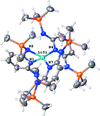
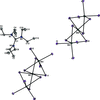








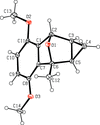


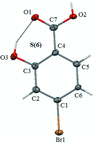





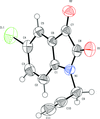





















![[publCIF]](/logos/authorchecklist11.gif)





